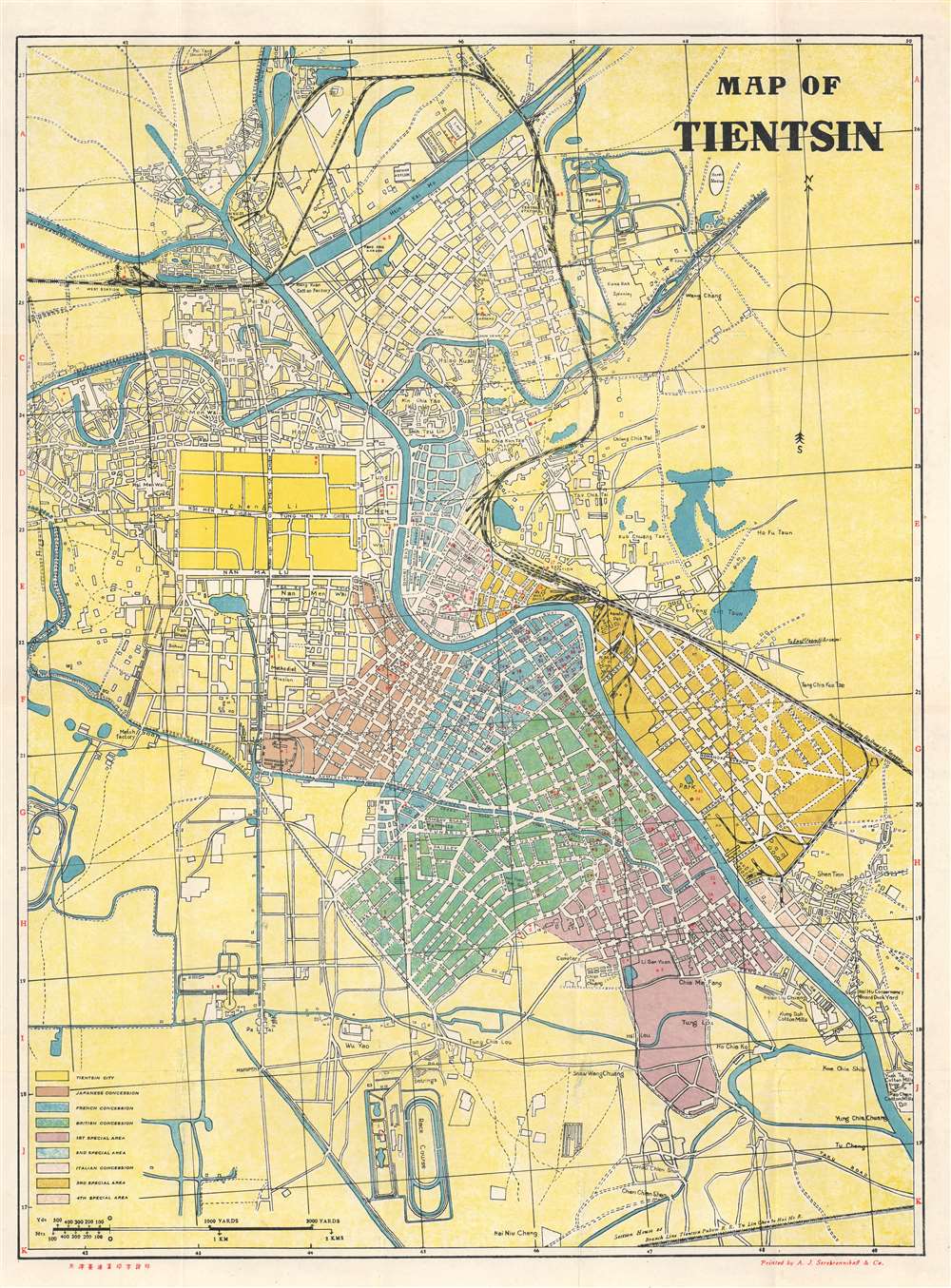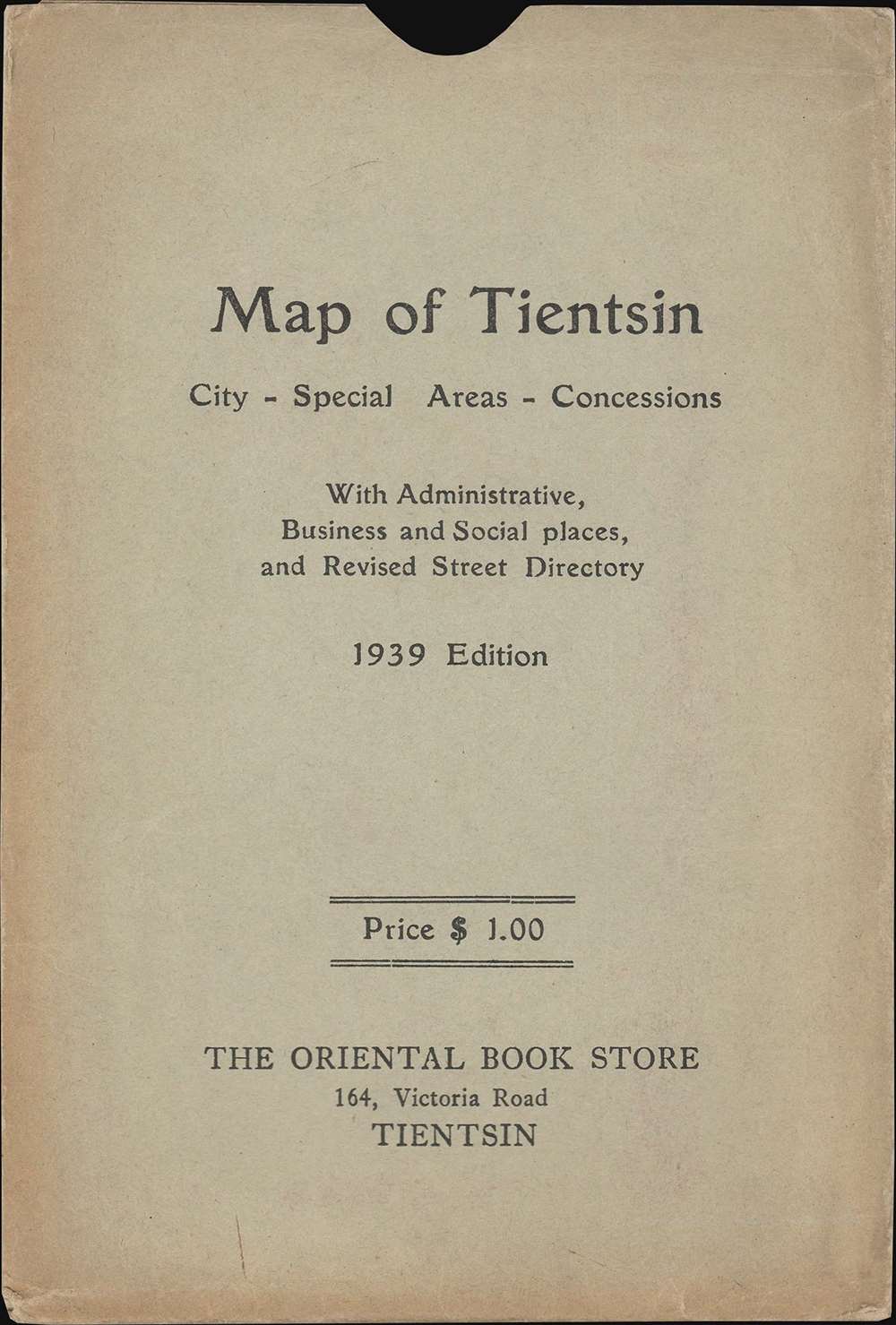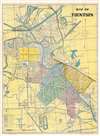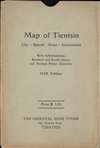This item has been sold, but you can get on the Waitlist to be notified if another example becomes available, or purchase a digital scan.
1939 Oriental Bookstore City Plan or Map of Tientsin (Tianjin), China
Tientsin-orientalbookstore-1939
Title
1939 (undated) 22 x 16.125 in (55.88 x 40.9575 cm) 1 : 20000
Description
Historical Context
Tensions were rising across China (and throughout the rest of the world) in 1939. The Second Sino-Japanese War had been raging since 1937. The world recoiled at the Rape of Nanjing. The Chinese Nationalists, led by Chiang Kai-shek, suffered a string of defeats that forced them to into inland China, setting up a temporary capital at Chongqing. Over 12 million Chinese citizens were refugees, fleeing Japanese violence and oppression. The Chinese government was on the brink of economic collapse. The United States did not want to antagonize the Japanese and risk all-out war in the Pacific, so were unwilling to help the victimized Chinese. However, the British had fostered a close relationship with China since the mid-1930s and recognized the importance of China's economic stability. This led the British government and British banks to lend the Chinese government hundreds of millions to stabilize their currency and resist Japanese conquest. This, of course, was not entirely altruistic. From the British perspective, a Sino-Japanese conflict was a buffer that protected British Asia from Japanese imperialism.Tientsin, 1939
Tientsin's geographic location, as the nearest major port to Beijing, made it one of the most important ports in China. After the Opium Wars, foreign powers began demanding extraterritorial privileges in Tientsin, along with several other crucial Chinese ports. Over the course of the late 19th and early 20th century, the configuration of Tientsin's concessions changed several times. In 1939, four foreign concessions remained, each of which are defined here: Japanese Concession (brown), French Concession (blue), British Concession (teal), and Italian Concession (cream). Four 'special areas' are also noted.Occupation
The Japanese partially occupied Tientsin on July 30, 1937. Although Japanese forces dominated the Chinese part of the city, they grudgingly respected the extraterritoriality and integrity of the foreign concessions until 1941. Tension between the Japanese and the British finally erupted into full-scale war in 1939.The Tientsin Incident
On April 9, 1939, a bomb exploded in Tientsin's Grand Theatre. The target of the bombing was Cheng Hsi-keng, a Chinese collaborator and the manager of the Japanese-owned Federal Reserve Bank of North China. The other casualties were innocent bystanders who had the misfortune of sitting close to the assassins' target. The Japanese recognized the bombing as an assassination and accused six Chinese men living in the British concession of carrying out the attack. Historically, Britain handed over Chinese citizens accused of crimes living within their concession to the Tientsin police. However, the British did not recognize the Japanese puppet government of China led by Wang Jingwei, making handing the accused over to the local police impossible. Nonetheless, the British concession police arrested the accused men, turning them over to the Japanese for questioning, with promises that they would not be tortured and would be returned to British custody within five days. Unsurprisingly, the Japanese extracted confessions under torture, but did return the prisoners. There assassins were again in British hands, but the Japanese demanded them back. The British, believing the confessions coerced, refused.The Blockade
The British refusal to return the assassins incensed the Japanese who blockaded the British concession in retaliation. The Japanese Northern China Area Army surrounded the British concession on June 14, 1939, building an electrified wire fence. Anyone entering or leaving the concession was publicly strip-searched by Japanese soldiers (including women - which drew the ire of British public opinion). All food and fuel found on these individuals was confiscated. In order to lift the blockade, the Japanese demanded not only the transfer of the four suspected assassins, but also that the British forbid all anti-Japanese radio broadcasts from anywhere in the British Empire, ban all school textbooks that the Japanese considered offensive, end the issuing of fapi currency, and that the British hand over to the Japanese all silver reserves belonging to the Chinese government held in British banks. This silver was used as collateral for the vast loans the British gave to the Chinese nationalist government. With these demands, the Japanese aimed to end British economic support of the Chinese government and end the war in China. From the British point of view, the demands were completely unacceptable. The British Admiral of the Fleet Sir Roger Keyes viewed the entire situation as tantamount to a declaration of war. For a brief moment in history, it seemed as if Britain was headed for an all-out war with Japan.Resolution
Neither the Japanese nor the British wanted all-out war at this point. The Japanese Army was bogged down in China and suffering Soviet attacks along the Russo-Chinese border. Army officials believed that starting a third war would be disastrous. Britain knew that Hitler's Germany was on the cusp of invading Poland, and the Royal Navy was seen as one of the prime deterrents. No one in Britain wanted to send the Navy to the Far East to fight the Japanese when it was almost certain that it would be needed in Europe in the very near future. The British also could not count on French or American help against the Japanese. Thus, both sides were motivated to find a negotiated peace.During this same timeframe, the United States announced it would not be renewing the 1911 Treaty of Commerce and Negotiation with Japan, making much needed war supplies, such as scrap metal and oil, more difficult to obtain. This development heightened economic pressure on Japan and allowed the British greater leverage. In the end, a two-paragraph 'formula' ended the blockade. This document secured that the British recognize the war in China and not work against Japanese actions necessitated by that reality. The British also agreed to hand over the four suspected assassins, who, contrary to the agreement, were publicly and summarily executed. The execution led to a major public relations disaster for British Prime Minister Neville Chamberlain's government, an event that might have had greater impact had Germany not invaded Poland two weeks later.
Publication History and Census
This map was created by The Oriental Book Store in Tientsin and printed by A. J. Serebrennikoff and Company, also of Tientsin. Three examples are cataloged in OCLC and are part of the institutional collections at the University of California Berkeley, the University of Reading in Reading, United Kingdom, and the State Library of Victoria in Melbourne, Australia. We are aware of one other example in private hands.Cartographer
John Elias Paradissis (June 27, 1895 - March 19, 1992) was a Turkish-American bookkeeper, bookseller, and publisher. Born in Smyrna, Turkey, Paradissis operated The Oriental Bookstore in Tientsin, China, in the 1930s until at least 1940, when he published Chinese Art Ivory written by Barry Eastman in Tientsin. Paradissis married Tatiana Basil Shastovsky (February 19, 1914 - September 16, 1997) on February 3, 1946, in Tientsin. Tatiana entered the United States on June 14, 1948, with her stepson Philip. They went to St. Petersburg, Florida. John arrived six years later in Seattle via United Airlines on October 4, 1954. Paradissis became a bookkeeper in the United States. Tatiana became a naturalized U.S. citizen on January 14, 1955, and John became a naturalized U.S. citizen on April 18, 1958. Paradissis married Penelope Hadjiry in Shanghai with whom he had one son, who was Tatiana's step-son, that was born in Tientsin on August 8, 1944. Unfortunately, the historical record leaves very little trace of Penelope, except her purported birthdate, December 2, 1908. We have been unable to determine anything about her life or what happened to her. Paradissis died in Los Angeles in 1992. More by this mapmaker...




